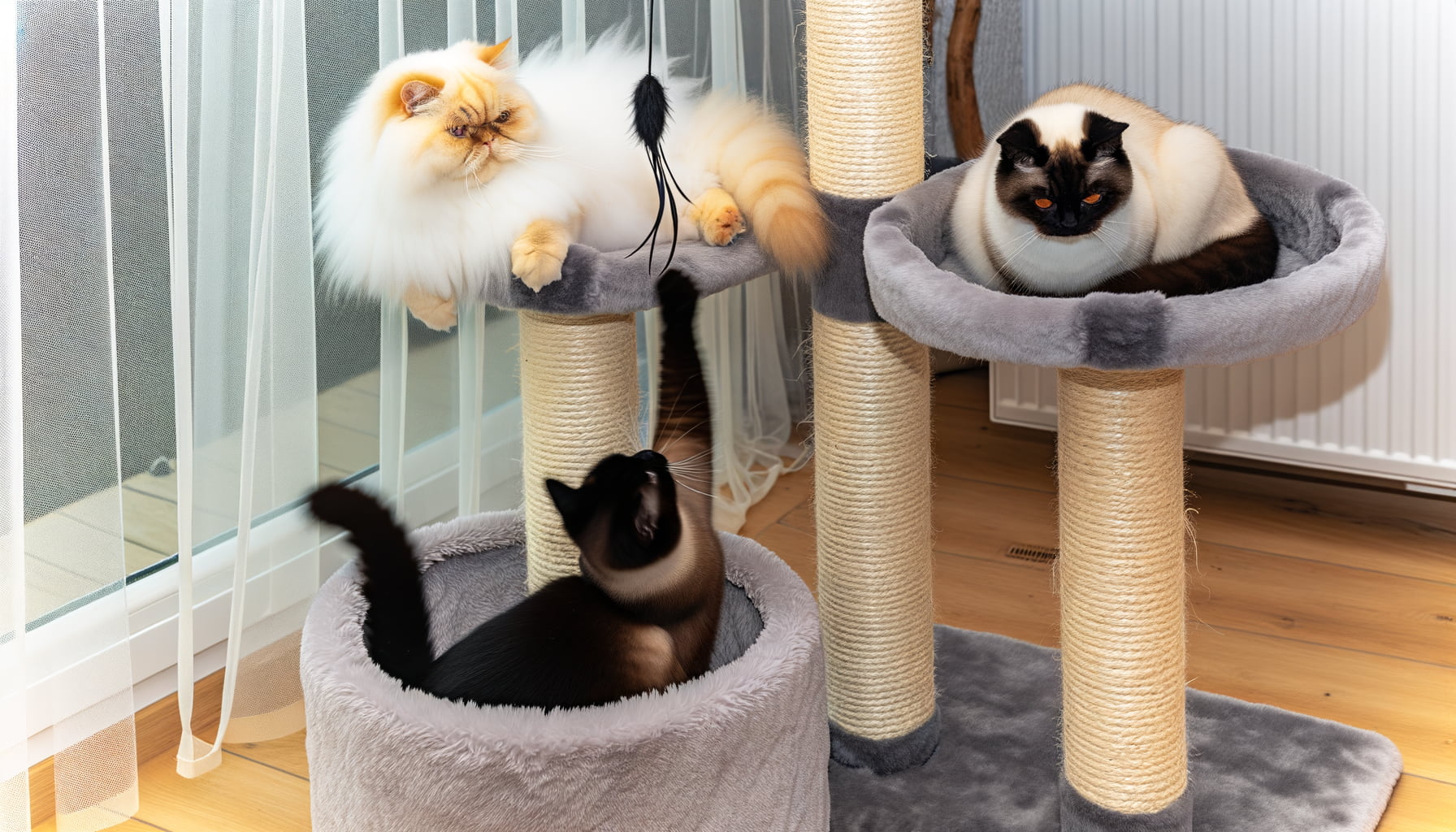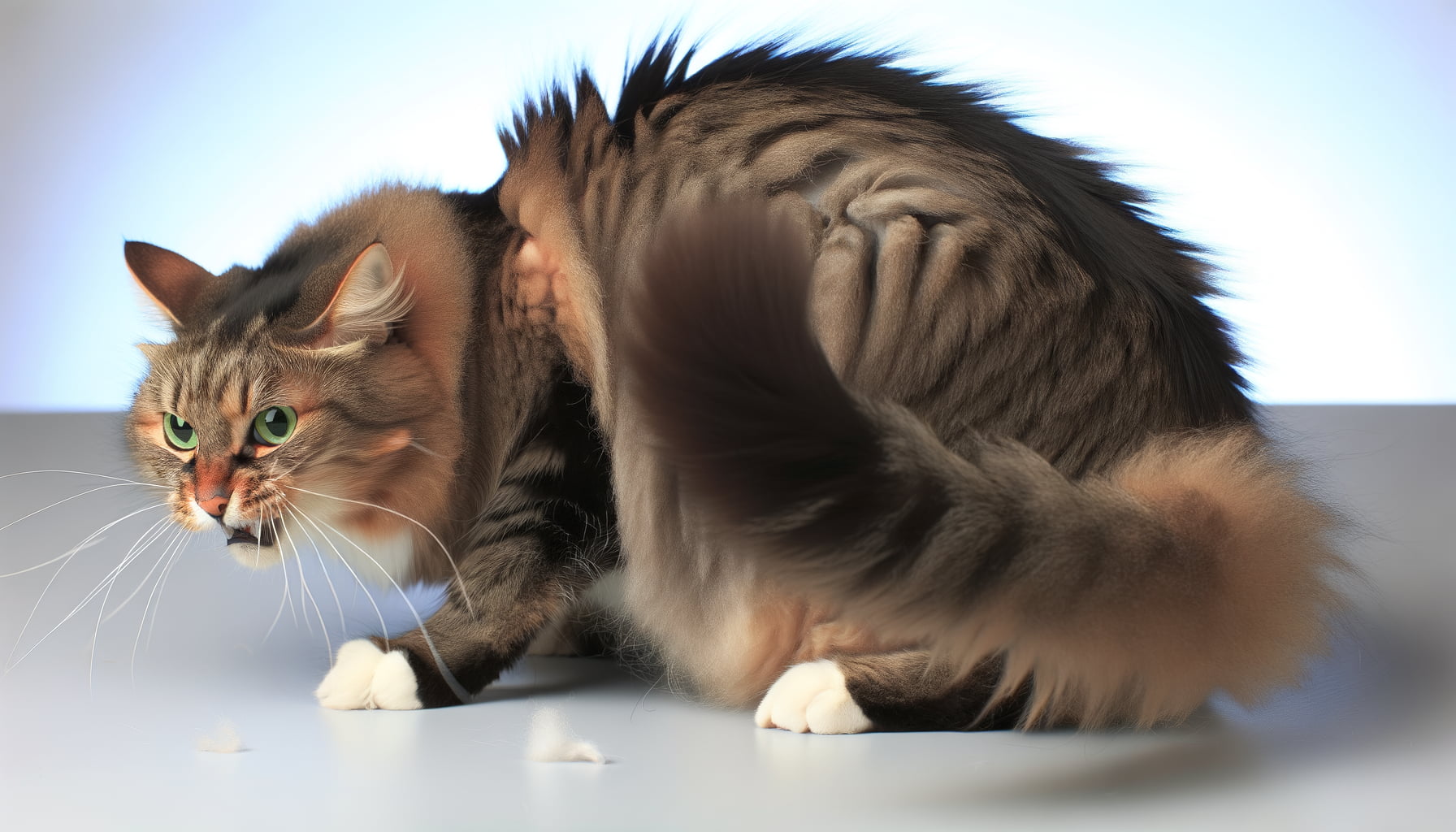Unraveling Feline Behavior: Do Cats Really Kill Each Other?
While extremely rare, under extreme circumstances or in situations of heightened territorial aggression, cats can inflict lethal harm on each other. More commonly, cats may engage in fights that result in scratches or bites, often due to disputes over territory or mating rights. It’s essential to understand, however, that this is not the norm under regular circumstances, especially when the cats are properly socialized and live in a balanced environment. In many instances, cat behavioral issues can be mitigated through appropriate training, providing sufficient resources, or consulting with a veterinarian or animal behaviour expert.
Preventing Extreme Aggression and Fights Among Cats

One of the paramount ways to preclude extreme aggression and fights among cats revolves around understanding and utilizing their natural behavior. Cats are territorial animals, hence, providing separate resources such as litter boxes, feeding stations, and resting areas can resolve potential conflicts. These resources should be scattered around the home environment, enabling each cat to access them without crossing paths with others.
Socialization is also crucial in averting intense aggression. Integrating new cats into the household gradually, using a method called ‘slow introduction’, can foster a peaceful coexistence. The process involves separating the new cat from the existing ones, let them familiarize themselves with each other’s scent, then gradually introducing visual contact before allowing them to physically interact.
Lastly, prompt veterinary care is pivotal when overt aggression occurs. Certain medical conditions, or pain, can induce aggression in cats. Regular vet check-ups can ensure any changes in a cat’s health are addressed swiftly, potentially preventing further aggression or fights. Recognizing the symptoms of potential health issues such as changes in eating or elimination habits, unusual growling, or hiding, can serve as the key to avoiding serious cat fights.
Circumstances that May Trigger Cat Fights

Competition figures prominently as a primary trigger for cat fights. Cats are inherently territorial creatures. Each pet seeks to stake claim over shared resources such as food, toys, or even attention. Therefore, the introduction of a new cat or an adjustment in resource availability can escalate tensions, culminating in a feline brawl.
Unaltered Cats are another cause for concern. Given their drive to mate, unneutered male cats often clash over potential partners. Lack of surgical intervention, such as spaying or neutering, results in hormonal surges leading to enhanced aggression and, consequently, more fights.
Surprisingly, overstimulation can also stir conflict within a seemingly peaceful pack. A cat that is hyper-engaged—with toys or human interaction—can react unpredictably if approached. A sudden disruptive move or an abrupt pet may trigger a reaction, sometimes becoming a catalyst for a fight.
Determining the Fatal Outcomes of Cat Fights

Contrary to popular belief, cat fights rarely result in fatal outcomes. Cats, by nature, demonstrate aggression merely as a show of dominance and not with the inherent intention of killing. Instances where deaths occur can be quite rare and are usually a result of inflicted injuries leading to complications, rather than the direct result of a cat attack.
Injuries sustained in a cat fight can be severe, leading to bacterial infections if not treated promptly and adequately. Even if the injuries appear superficial initially, there can still be serious underlying damage. Bites, for instance, can transmit disease, not to mention the risk of abscesses forming. Hence, it is essential for cat owners to seek veterinary assistance immediately following any fight.
Overall, the threat of fatal outcomes in cat fights is not a common occurrence. However, owners should be alert to the risks associated with aggression in cats. Understanding the motivations behind these behaviours and knowing how to control and mitigate them will help ensure the safety and wellbeing of our feline companions.
Understanding Feline Behavior and Aggression

Decoding the complex world of feline behavior requires a deep understanding of their instinctual drives. One aspect that bewilder owners is the intensity of their aggression. Though often interpreted as an indication of malice, it is important to remember that cats are fundamentally predatory animals. Elevated aggression levels can often be traced back to instincts that are catering to preservation and survival.
Cats, for instance, are highly territorial creatures. Much of feline aggression is linked to the protection of their territory or resources. Moreover, social hierarchies among cats, often based on their strength or age, can also breed aggressive behavior. However, these fights and displays of aggression are, in most cases, to establish dominance rather than cause fatal harm.
Conflicts between cats can certainly be alarming, with their intimidating displays including hissing, arched backs, and swatting claws. But, it is essential to note that the end goal of such fights is not usually to murder each other. Cats often engage in these skirmishes to frighten off intruders or rivals, not to kill. Hence, while their battles can look intense, they rarely, if ever, result in fatal outcomes.
Conclusion
After delving into the intricate world of feline behavior and the dynamics of cat-to-cat interactions, it becomes apparent that while cats may exhibit aggressive tendencies towards one another, the act of killing is a rare occurrence in domestic settings. Each cat’s unique personality and background play a significant role in their interactions with their feline counterparts.
By unraveling the complexities of feline behavior, we gain a deeper understanding of our beloved pets and how they navigate their social landscapes. While conflicts may arise among cats, it is essential to provide a safe and enriching environment that fosters positive interactions and minimizes the risk of extreme violence within our feline companions.






